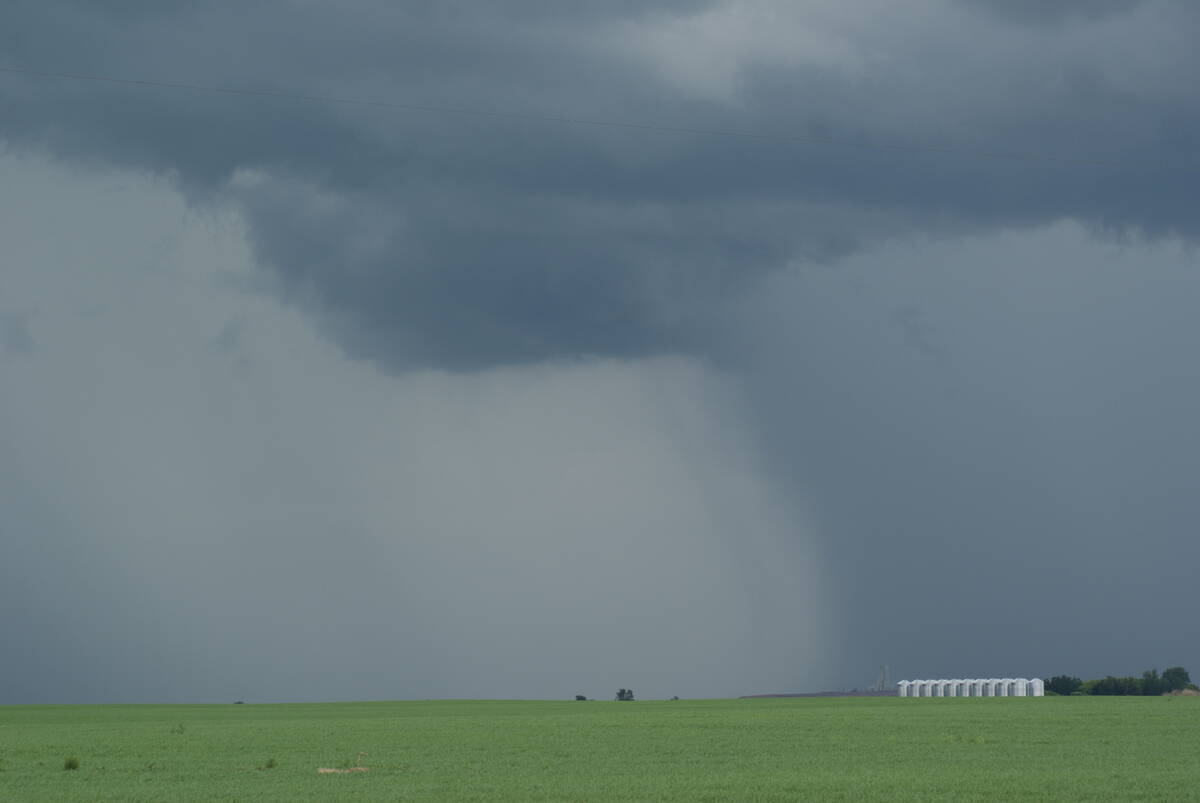Preparing to paint a house
The warm, dry weather this spring has turned my thoughts to painting, both inside and outside the house.
We installed some new windows and scraped the dry flaking paint from others. In both cases there was raw wood exposed that needed an alkyd (oil-based) wood primer to seal the wood. There are specially formulated oil base primers that accept both latex and oil paints. If you are priming plywood, use an approved latex plywood primer.
Before painting I washed the window frames with T.S.P. (trisodium phosphate). This is an all-purpose heavy duty cleaner that is available where painting supplies are sold. To prepare surfaces for painting and to improve paint adhesion, scrub well with a solution made from five tablespoons (100 mL) of T.S.P. with half a bucket (four litres) of warm water. Rinse with clean water. Be sure to use rubber gloves and avoid skin contact. Once the surface is thoroughly dry, it can be primed.
Read Also

Canadian farmers need new tools to support on-farm innovation
Farmers need a risk management buffer that actually works and investment that drives advancements forward if Canada is to build resilience.
For the final coat we painted with a good quality exterior latex paint. Alkyd paints do have more durability than latex paints on any surface where water can lay, such as window sills or horizontal trims.
Inside the house we removed some wall paneling and discovered five or six layers of old wallpaper, none of which were the modern dry strippable type. I tore off any of the wallpaper that was loose and began soaking the wall to loosen the old glue on the other layers. Equal parts of vinegar and hot water seemed to be more effective than just water. A layer of towels or rags on the floor are useful for catching the water drips. A paint roller and tray seems to be the most effective and fastest way of soaking the wall.
Once the majority of the paper had been removed I scrubbed the wall with a nylon wall scrubber and the T.S.P. solution. I used a dry cloth to wipe off the glue and dirt and then rescrubbed and rinsed with clear water.
The original plaster had nail holes and cracks that had to be repaired. We used drywall filler but any good quality powdered or premixed join or crack filler would work.
To reduce the amount of sanding needed, put on several smooth, thin layers of filler. Using a sanding block that attaches to a vacuum cleaner will reduce the amount of dust in the house. If you don’t have one of these, hold the vacuum hose close to your sanding block to suck up the dust. Use a damp cloth to remove the last of the sanding dust from the wall before priming. Plaster, drywall and patched spots should be primed with a latex drywall primer to seal and conceal the patches.
For a living room, a semi-gloss or low-gloss latex paint is what I like. If you have wall imperfections, low- gloss paint will hide them better than high-gloss paint. Replacing the dark old wall paneling with a light colored paint has brightened up our living room.
Pizza recipes sought
Dear TEAM: I collect cookbooks at yard sales, etc. I’ve looked in vain for a pizza cookbook. – Ever Onward, Plenty, Sask.
Dear Ever Onward: The public library is a wonderful resource for cookbooks. Some good ones are:
- Pizza & Savoury Breads Cook Book, by Joanne Glynn, a Bay Books publication of HarperCollins Publishers, 25 Ryde Road Pymble, Sydney NSW 2073, Australia, 1994.
- The Pizza Gourmet: Simple Recipes For Spectacular Pizzas, by Shea Mackenzie, printer Paragon Press, Honesdale, PA, U.S.A., 1995.
- The Pizza Book: Everything There Is To Know About The World’s Greatest Pie, With More than 200 Recipes You Can Make At Home, by Evelyne Slomon, published by Times Books, The New York Times Book Co., Inc., 130 Fifth Ave., New York, NY 10011. Published in Canada by Fitzhenry & Whiteside, Ltd., Toronto, 1984.
Focaccia, flat breads and bread sticks are all forms of a side dish bread. They are good dipped into a spicy warm tomato sauce or a mixture of olive oil and herbs. I particularly liked Joanne Glynn’s parmesan flatbread from her Pizza & Savoury Breads Cook Book.
Parmesan flatbread
2 cups all-purpose 500 mL
flour
1Ú3 cup parmesan 75 mL
cheese
1 teaspoon salt 5 mL
2 teaspoons 10 mL
baking powder
1Ú4 cup melted 50 mL
butter or margarine
2 eggs 2
3Ú4 cup milk 175 mL
1 teaspoon dried 5 mL
or chopped fresh sage
Preheat oven to 375 F (190 C) and brush a baking tray with oil.
Mix flour, cheese, salt and baking powder in a bowl and stir well. Add butter, eggs and milk. Stir until mixture begins to clump around the spoon. Transfer to a floured surface and finish mixing by hand. When a soft but not sticky dough forms, knead lightly for 11Ú2 to two minutes.
Form into a ball, then transfer to prepared tray. Working outward from the centre, press dough to flatten it out to an oblong half inch (1 cm) thick. It will be approximately 9 x 12 inches (22 x 30 cm). Sprinkle sage over the top then set aside to rest for 20 minutes. Bake in oven until golden, about 20 minutes. This is good hot or cold.














